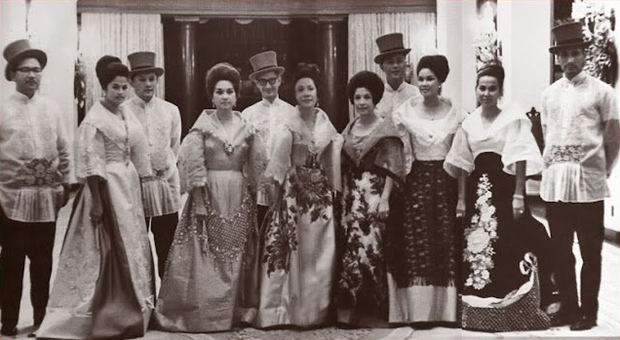Exploring Filipino Fashion History: From Traditional to Modern
- yzuasola
- Feb 25, 2024
- 2 min read
Filipino fashion has a rich and diverse history that has evolved over time, blending traditional elements with modern influences. From the traditional baro't saya and barong Tagalog to contemporary clothing designs and trends, Filipino fashion has undergone a remarkable transformation. In this blog post, we will take a closer look at the evolution of Filipino fashion and explore some of the key styles and trends that have shaped it. Traditional Filipino Clothing: Baro't Saya and Barong Tagalog The journey through Filipino fashion history begins with the traditional clothing worn by Filipinos for centuries. The baro't saya is a traditional Filipino dress for women, consisting of a blouse (baro) and a skirt (saya). The baro't saya is often made from delicate fabrics such as piña or jusi, and is adorned with intricate embroidery and beadwork. For men, the barong Tagalog is the traditional attire. It is a lightweight, embroidered shirt made from piña or jusi fabric. The barong Tagalog is known for its intricate embroidery, often featuring traditional Filipino motifs and patterns.
Transitioning to Modern Filipino Fashion
As time went on, Filipino fashion began to incorporate modern influences, resulting in a fusion of traditional and contemporary styles. This transition can be seen in the evolution of clothing designs and trends.
One example of modern Filipino fashion is the fusion of traditional textiles with modern silhouettes. Designers have taken traditional fabrics such as piña, jusi, and t'nalak, and incorporated them into modern clothing designs. This combination of traditional textiles with contemporary cuts and styles creates a unique and distinct look.
Another trend in modern Filipino fashion is the incorporation of indigenous elements. Designers have been inspired by the rich cultural heritage of the Philippines and have incorporated indigenous patterns, motifs, and techniques into their designs. This not only celebrates Filipino culture but also helps to preserve and promote traditional craftsmanship.
Tips for Incorporating Filipino Fashion into Your Wardrobe
If you're interested in incorporating Filipino fashion into your wardrobe, here are a few tips to get you started:
1. Start with accessories: Accessories are a great way to add a touch of Filipino fashion to your outfit. Look for accessories made from traditional materials such as piña, jusi, or t'nalak. These can include earrings, necklaces, bracelets, or even handbags.
2. Experiment with traditional textiles: Look for clothing items that incorporate traditional Filipino textiles such as piña, jusi, or t'nalak. These fabrics add a unique and cultural touch to your outfit.
3. Mix traditional and modern pieces: Don't be afraid to mix traditional Filipino clothing pieces with modern ones. For example, pair a barong Tagalog with jeans or a baro't saya with a contemporary skirt. This creates an interesting and stylish fusion of traditional and modern fashion.
4. Support Filipino designers: Look for Filipino designers who incorporate traditional elements into their designs. By supporting local designers, you not only contribute to the growth of Filipino fashion but also help preserve traditional craftsmanship.
Filipino fashion is a vibrant and ever-evolving industry that celebrates the rich cultural heritage of the Philippines. By exploring the history and trends of Filipino fashion, you can incorporate unique and meaningful pieces into your wardrobe while supporting local designers and artisans. So why not embrace the beauty of Filipino fashion and make a statement with your style?













Comments